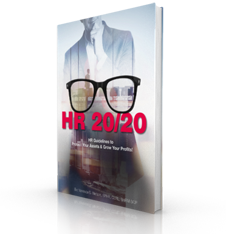Stress and anxiety related to working during COVID-19
According to Business.com, the COVID-19 pandemic has compounded the existing challenges associated with stress and anxiety in the workplace. For some, the realities of working in public during a global pandemic raise significant health and safety concerns. For others, working from home carries challenges of its own. Others still find themselves unemployed and in dire financial straits, which heavily contributes to stress and anxiety as well.
(To assess your stress level, download the free Covid Stress Assessment document under the Resources tab above: https://www.experthumanresources.com/wp-content/uploads/2021/03/COVID-Stress-Assessment.pdf)
For those working from home, the stress of social isolation and an “always-on” mentality could easily contribute to burnout, a common workplace phenomenon acknowledged by the World Health Organization. For those working in a physical workplace, the demands of adapting to COVID-19 and social distancing measures can interrupt creativity and workflow productivity in meaningful ways. Additionally, many employers might fail to provide adequate personal protective equipment (PPE) or avail employees to much-needed paid time off.
The circumstances created by the spread of COVID-19 and the national response to the pandemic have impacted the vast majority of employees. Nearly 70% of American workers reported that the COVID-19 pandemic has been the most stressful time of their career. Similarly, 88% of employees reported moderate to extreme stress in the early months of the pandemic.
The primary causes that have compounded work-related stress and anxiety for employees during the pandemic include:
- Concern regarding personal health or the health of family and friends;
- Concern about alerted financial circumstances or worry about loss of a job;
- Changes in sleeping or eating patterns;
- Difficulty sleeping or maintaining focus;
- Worsening of pre-existing chronic health conditions;
- Worsening of mental health conditions;
- Increased consumption of caffeine, nicotine, alcohol, or other substances.
The impact of these conditions has been significant on productivity as well. Among employees reporting increased stress levels during the pandemic, 62% said they lost at least one hour per day in productivity, while 32% reported losing two hours per day. That translated to the loss of nearly $23 billion in the brief window from the start of the pandemic to April 2020. As the COVID-19 pandemic drags on, the lost productivity and the costs to employee health and well-being, continue to mount.
Addressing workplace stress and anxiety
To adequately address the growing problem of workplace stress and anxiety both during and after the COVID-19 pandemic – and the physical and mental health consequences associated with it – a multi-pronged approach is needed. This approach should include the provision of additional mental/emotional health support from employers in the form of employee assistance programs (EAPs), as well as novel approaches to psychotherapy and fundamentally different medications by mental health professionals.
References: Article – Business.com; and Stress Assessment Document: HelpNet Bronson Heathcare




